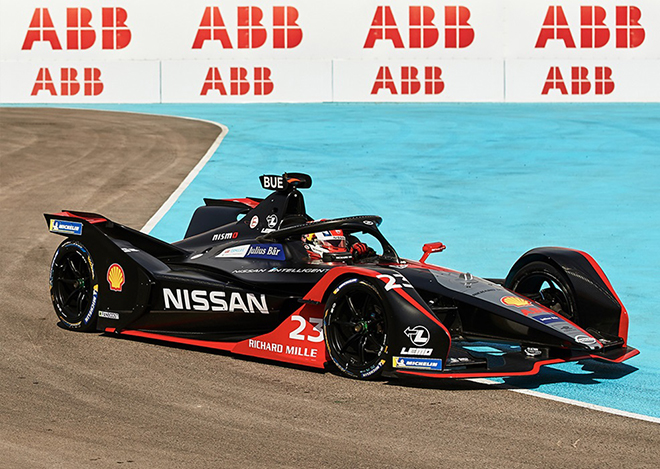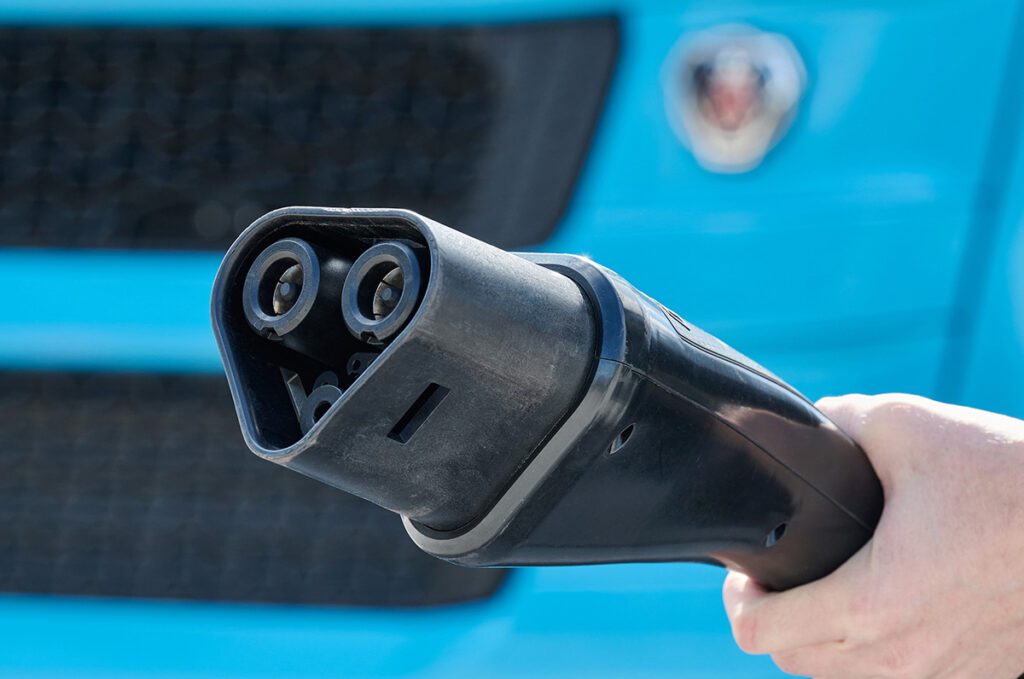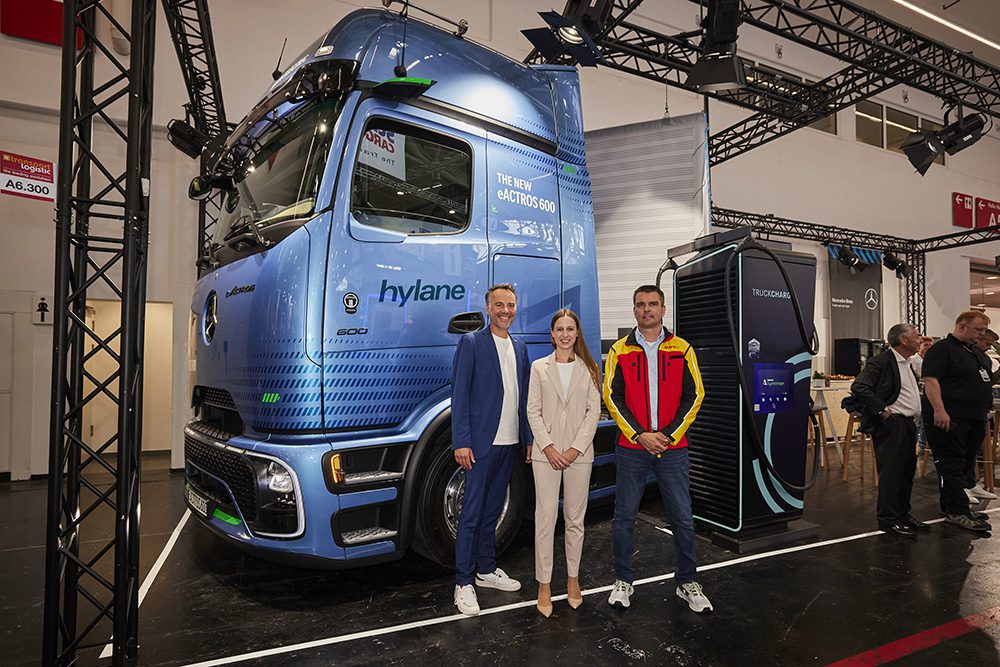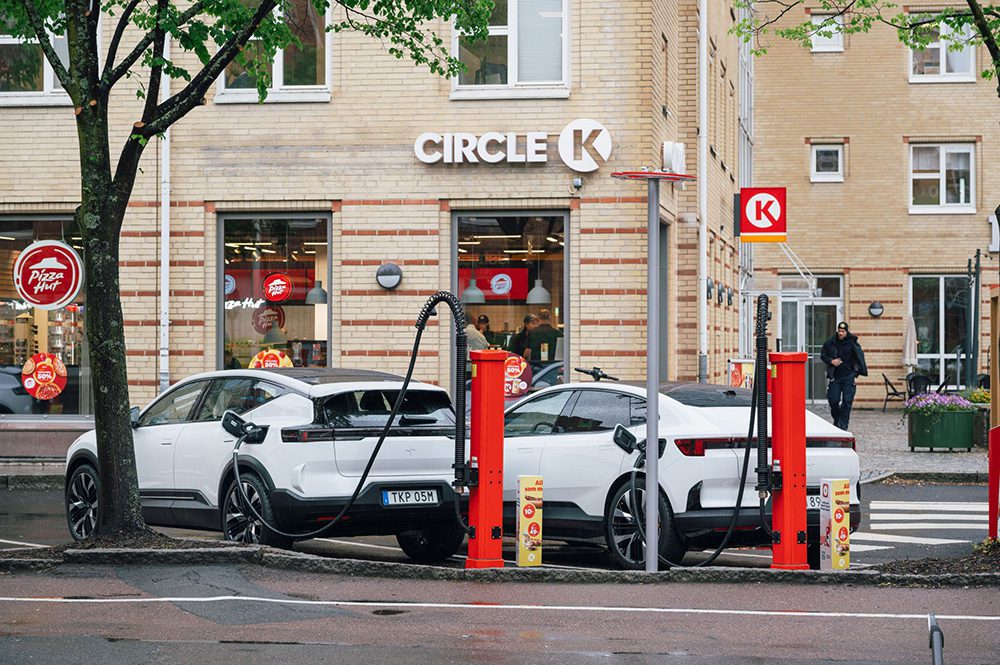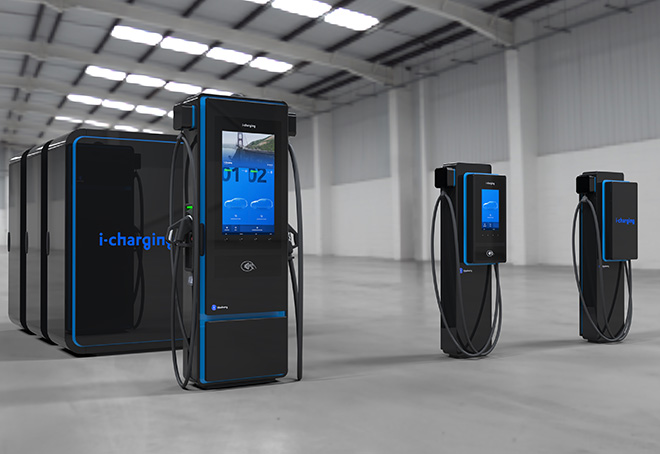Global electronics giant ABB is involved in many aspects of the electromobility industry, from charging infrastructure to batteries to utility integration to robotics. It’s quite fitting that ABB is the lead corporate sponsor of Formula E, the all-electric racing series that’s now in its seventh season. Charged met with several ABB executives at the recent New York City E-prix.
There are more manufacturers involved in Formula E than in any other form of motorsport in the world, and one reason for this is because it’s an exciting way for companies to promote their electrification efforts. In fact, part of the impetus for creating Formula E was to appeal to sponsors who wanted to green up their images.
Formula E co-founder and Chief Championship Officer Alberto Longo told Charged that, back in 2012, a lot of sponsors were already starting to be concerned about the environmental aspects of gas-powered motorsports. “It wasn’t the right messaging for their companies. I knew that we needed to create a platform that really invited all these big brands that didn’t have a place in promoting [gas-powered racing] because of the sustainability angle.”
And the rest, as they say, is history—Formula E has been a huge success, and the folks we spoke with in New York told us that their partnership with the electric racing series has brought a tremendous amount of public awareness to ABB—which is not exactly a household name to consumers—as well as, of course, to e-mobility in general.
However, for ABB and the many other companies involved with Formula E, it’s not all about marketing by any means—there’s some important product development going on. As the saying goes, “Race on Sunday, sell on Monday.” ABB’s work with Formula E has already led to numerous practical advances.
“A lot of what we do with Formula E, we’ll pull the lessons learned and the improvements to our mass-market chargers or equipment,” ABB Global E-Mobility Executive Stephanie Medeiros told Charged. ABB is currently providing UPS systems for Formula E’s broadcast center, and it provided 50-kilowatt chargers for the Jaguar I-Pace trophy, a racing series that was presented before the main Formula E races for two seasons from 2018 to 2020.
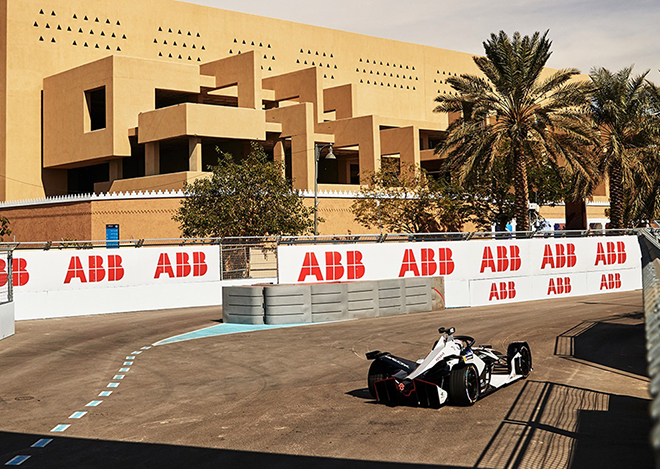
The real action will begin with the 2022/23 season, when ABB will become the official infrastructure supplier for Formula E. The companies are already working closely together to develop a third-generation charging system that will allow the Formula E racers to charge in less than a minute during pit stops, adding a new dimension to the races.
“We’ve been [working] on it for quite a while now—we’re designing the specifications, working on the prototypes,” Ms. Medeiros told us. (Technical specs such as voltage and power levels haven’t been announced yet.)
Charged asked Medeiros and other ABB execs for examples of technologies that were developed for Formula E that could find wider application in “the real world,” and they offered several.
“Formula E is a very unique application, because not only are we taking this equipment and shipping it all around the world, but we’re also connecting it to so many different power sources and different grids,” said Medeiros. “Typically, with electrical equipment, you install it and then you just leave it there for 10, 15-plus years. We’re taking this [equipment for Formula E] and shipping it around the world. You have to make sure that the equipment is robust and reliable enough that it will work when you get to the next destination. That’s a lot of really good data…there’s so much value and data we can take from that.”
“And the same thing with the chargers,” Medeiros continued. “The mobile [generation-3] chargers are going to be wheeled, because you want to maneuver them very easily when we put them in garages. It’s power electronics—you want to make sure that it’s safe, reliable and robust, so that when you plug it in, no matter what kind of rate or energy source, you’re going to get something that’s reliable. We’re going to take those lessons learned, and then put it into chargers.”
The most common theme in our discussions about learnings from Formula E was efficiency. Electric race cars are designed to be ruthlessly efficient, because less weight translates to more speed. In other applications, speed may not be important, but efficiency certainly is. Dan O’Shea, ABB’s Director of Utility Strategy and Business Development, told Charged that lessons learned about efficiency and vehicle weight are directly applicable to commercial vehicles such as trucks and buses.
“When electric transit buses first hit the market, they had an inverter on board, and they charged with alternating current,” said O’Shea. “Now, the general consensus seems to be that having the [AC-to-DC] conversion happen off-board lightens the bus, and makes room for a bigger battery. As the batteries get denser, that bus will have more range, and maybe more flexibility, because the charging will happen with DC. Bringing the charging off-board, to [lighten] the vehicles, you can see that this is happening in Formula E. There’s obviously this technological synergy between what happens in Formula E and what makes it to the commercial model.”
Source: ABB






